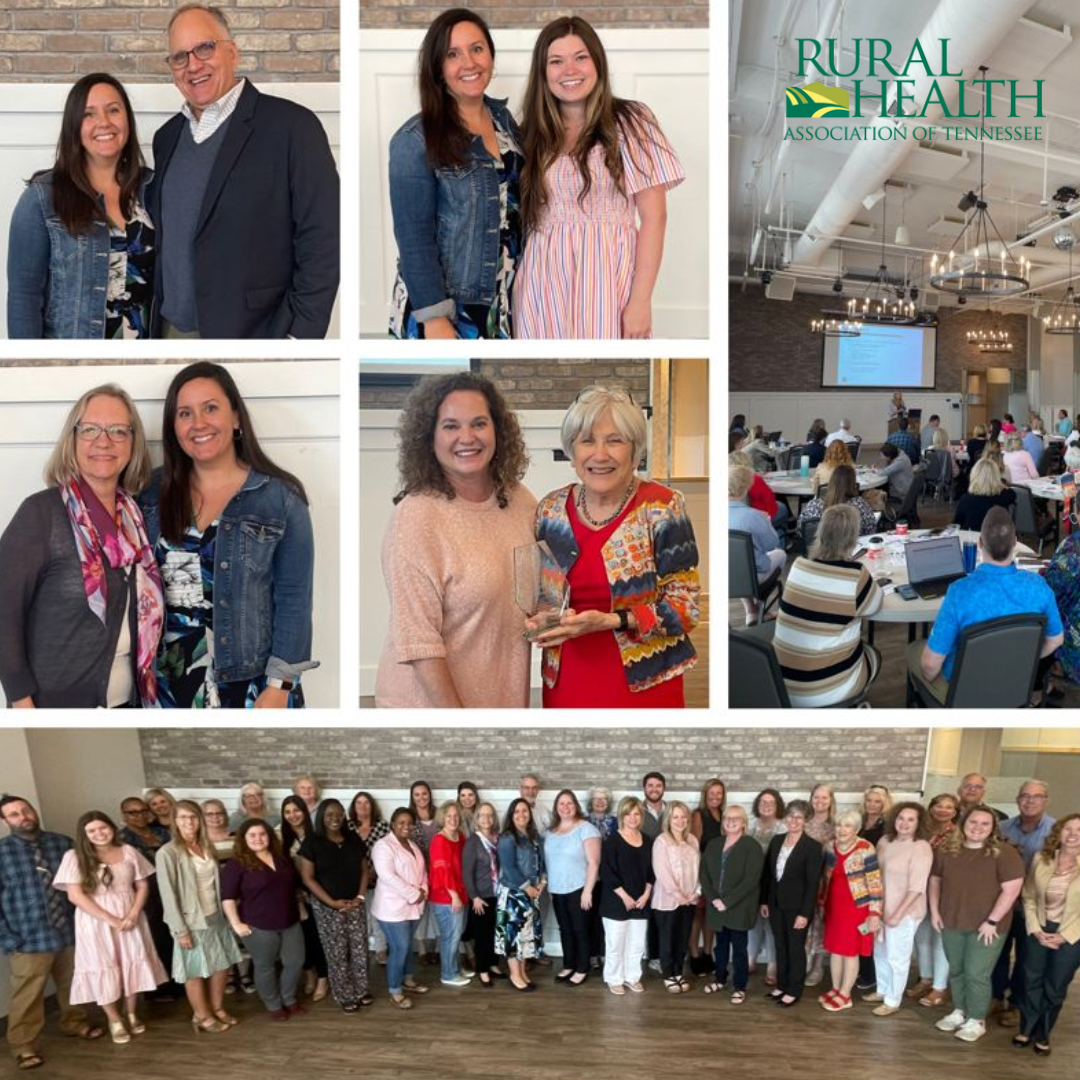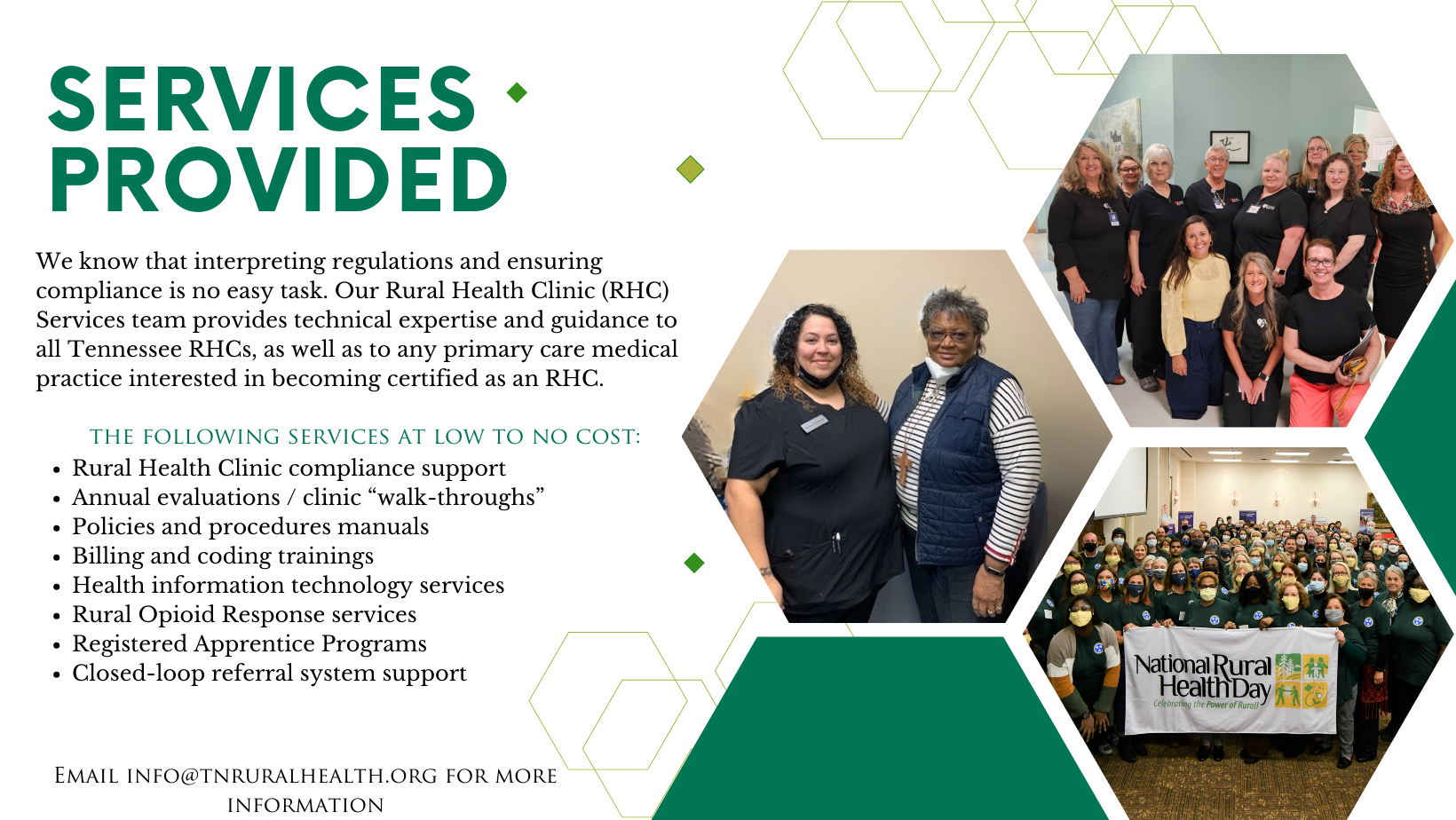About Rural Health Clinics in Tennessee
In Tennessee, nearly 22% of the population lives in non-metro areas - most of whom are Medicare and Medicaid patients. Rural Health Clinics are an important part of our healthcare safety net. In fact, nearly 45% of Tennessee's rural communities do not have a hospital or community health center but do have a RHC. The mission of the Rural Health Clinic (RHC) Network is “Improve the health and wellbeing of rural Tennesseans by strengthening and supporting the Rural Health Clinics who serve them.” Managed by Rural Health Association of Tennessee, the RHC Network closely monitors rural policy issues and provide support when changes may affect RHCs. We also provide annual educational workshops to keep RHCs informed of policy changes, billing and coding, evaluation and management. Subscribe to the RHC Newsletter |


 Tennessee is home to more than 260 independent and provider-based Rural Health Clinics (RHCs). Created by the federal Rural Health Clinic Services Act of 1977, RHCs are paid all-inclusive rates to perform qualified primary and preventive health services for Medicare and Medicaid patients in rural areas.
Tennessee is home to more than 260 independent and provider-based Rural Health Clinics (RHCs). Created by the federal Rural Health Clinic Services Act of 1977, RHCs are paid all-inclusive rates to perform qualified primary and preventive health services for Medicare and Medicaid patients in rural areas.